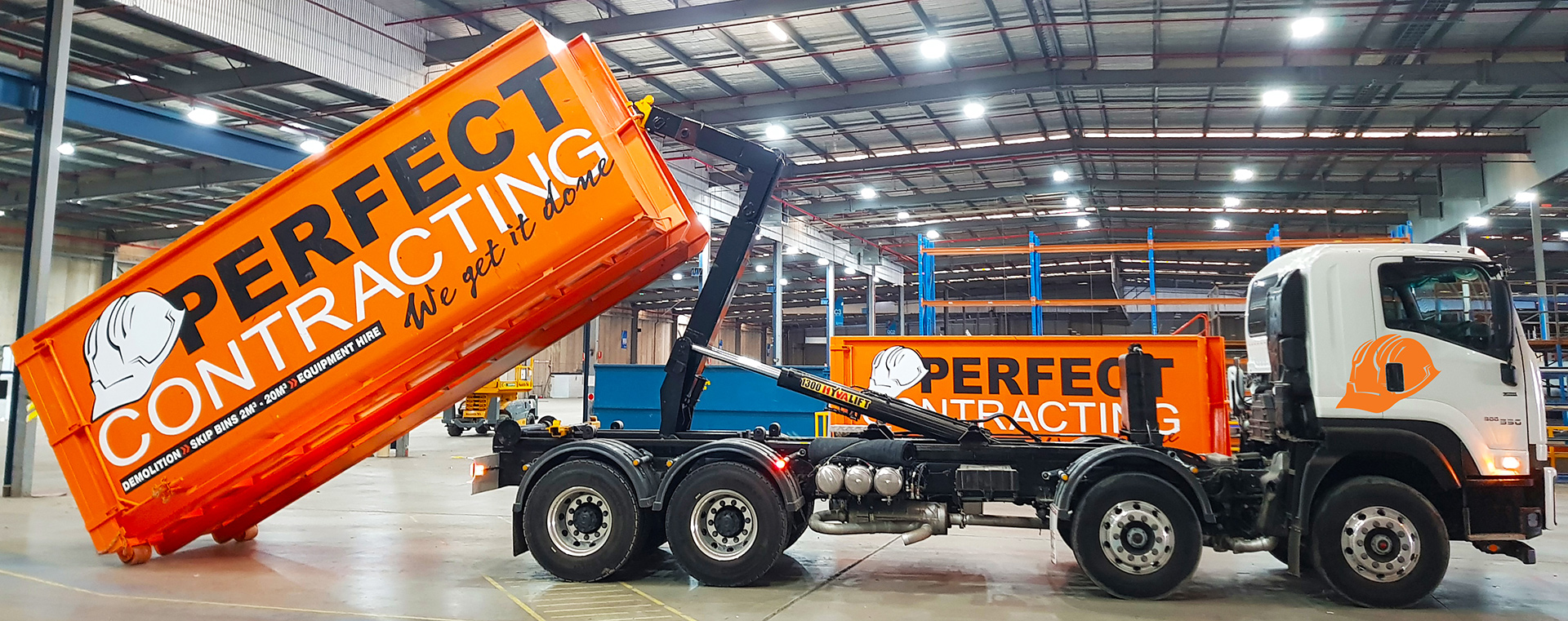by Daniel Green
More than 35 billion tonnes of non-metallic minerals are extracted from earth every year, with more to come as our population swells. Many of these are non-recyclable. Here’s another 35: percent. As in thirty-five percent of the worlds landfill is from construction and demolition waste. When 2 billion tonnes of the stuff is junked annually, that percentage weighs in at a hefty 700m tonnes.
Thankfully, initiatives by world governments have identified this issue and are working hard to reduce construction and demolition wastage [CDW]. Their directives often rely on prevention and mindset. Prevention – by reducing the use of non-recyclables in the first place. This means developing new tech and utilising new products in lieu of old. Mindset – by consciously changing the way we look at construction materials and processes. Stretching ourselves to consider now concepts, processes and materials.
Without being the harbinger of dramatic news [as we literally announce dramatic news], as construction professionals we have a duty to move swiftly towards a sustainable industry. The earth’s resources are finite and so is our window for change. If both run out then there won’t be a construction industry to work in.
Some New Products
Insulation
Believe it or not, thermal insulation is still not as widely utilised in Australia as it is in other parts of the world. Creating a thermal barrier is a low-cost endeavour that once installed, is a zero energy-use temperature controlling device. It also contains acoustic dampening qualities. Traditionally, insulation was made from asbestos or fibreglass bonded with formaldehyde. Obviously both are toxic and require involved disposal methods, so advancements in insulating technology has seen the industry steam ahead in leaps and bounds. Materials such as real sheep’s wool, polyester [made from recycled plastic bottles], hemp insulation and straw.
In South East Queensland, reported pre- and post-insulation temperatures ranged from four degrees cooler to ten. This is from a Higgins Insulation R3.0 polyester batt installed in a ceiling cavity scenario tested over several summers.
Structural Insulated Panels
These pre-fabricated panels consist of high-density foam sandwiched between layers of plywood, strand board and cement. It may not conjure images of green construction, but the maths doesn’t lie. Their main advantages are:
- The frame and wall are one unit, meaning less materials.
- They are prefabricated off-site specifically for the design, which means almost zero waste.
- Their insulating properties means they conserve 50% more heating and cooling energy than non-insulated buildings.
- Assembly is fast. In environmental measurements time is energy.
Reclaimed Timber
Everything old is new again, and aged timber is numero uno on the hip list. Not only does it look tres cool, it negates the need for new timber. Buying the new stuff means thousands of hectares of land, long-distance transport, vast quantities of energy in milling, transport again and enough offcuts to build a whole other house.
Engineered Wood
These are timber-containing products bound by adhesives and machined into specific shapes and lengths. Traditionalists will balk at the idea but the science is rock-solid: global carbon emissions could be down by 30 % if buildings were constructed with engineered wood in lieu of concrete and steel. Other benefits include less wastage, a more precise fit and a reduction in the need for logging.
Precast Concrete
Like SIP’s, precast concrete pieces are manufactured off site specific to the design. This means reduced waste and energy as the pieces are trucked in and assembled on site. This type of construction is better suited for commercial ventures and not so much residential, but the benefits are strong.
- Off site manufacture means on-site assembly can happen in virtually any weather.
- Concrete acts as a thermal barrier, much like brick.
- Concrete is durable, often lasting a hundred years in this setting.
Bamboo
Hailed as the hemp from the east [or is hemp the bamboo of the west?], this rapidly-growing, self-generating super product is swiftly becoming a replacement for traditional construction materials. It has more compressive strength than concrete, making it excellent at withstanding heavy loads and harsh conditions. Many Asian countries successfully use bamboo scaffolding to this day.
Cork
This is another fast-regenerating product that needs no encouragement to grow. Not only does it easily recycle – it’s hard wearing, flexible, oil and water resistant and is fire retardant. Its so handy that NASA uses it as insulation in spacecraft.
New Mindsets
Price, legal barriers and regulations are some further barriers to the swift introduction of new products and processes. These hurdles therefore must be overcome by innovation, which is to say new thinking. Unfortunately, the human condition is such that unless disciplined, it automatically chooses the path of least resistance – which is to say the status quo. Motivation occurs in two ways:
- The carrot, also known as ‘towards’ motivation. This gives an incentive that induces positive feelings in the recipient. Like a doggy treat to a young pup or a tax break to a business owner.
- The stick, or ‘away’ motivation. This creates arguably painful feelings in the recipient. Like a smack to a naughty child or a fine to a CEO.
We can use these methods, or a combination of them, to advance solutions in the reduction of construction waste. We can enforce sustainable practices by raising the cost of business for unsustainable construction through tariffs, taxes and fines. And we can reward businesses and individuals who consciously seek out sustainable construction methods. Some areas of mindset improvement are:
- Thorough segregation of metals to decrease landfill. Outside box thinking sees considerations such as using magnets or non-caustic, low impact chemicals.
- Sending more masonry products to recycling facilities to be broken down into pellets. These can be used as is in landscaping or as aggregates in new concrete and/or roads.
- Developing more gypsum recycling facilities. Once separated from its paper lining [which is also recyclable], gypsum is eternally and fully recyclable.
- Innovating treated timber recycling. Currently, there exists no method of reusing pine treated with anti-fire/anti-pest protection. This also goes for MDF, masonite and laminates like chipboard and particle board.
The catch is that innovative products and processes must be thoroughly tested before being rushed into service. Asbestos is a chilling reminder of that. This is why action must be taken now.
In Conclusion
Henry Ford put it succinctly when he famously said, ‘Think you can, think you can’t; either way you’ll be right.’However, pushing boundaries and stretching ourselves to create new mindsets is hard graft, especially when things are working good enough as they are. This is why change is difficult unless strong motivation abounds.
Earth truly is remarkable. One little rock spinning contentedly in the middle of nowhere with more natural wealth than we can truly grasp. We didn’t build it, farm it or mine it into existence. We didn’t even really earn it. It was gifted to us. Perhaps that’s the problem.
No matter which way you look at it our window for meaningful change is closing fast. And as one third of landfill comes from us I reckon we’ve all got a lot of work to do before it closes completely. And permanently.
Let’s Get It Done.
See more: www.awe.gov.au/sites/default/files/documents/case-studies.pdf
For more information on our services, take a look at our webpage or request a free quote.
contact us today
